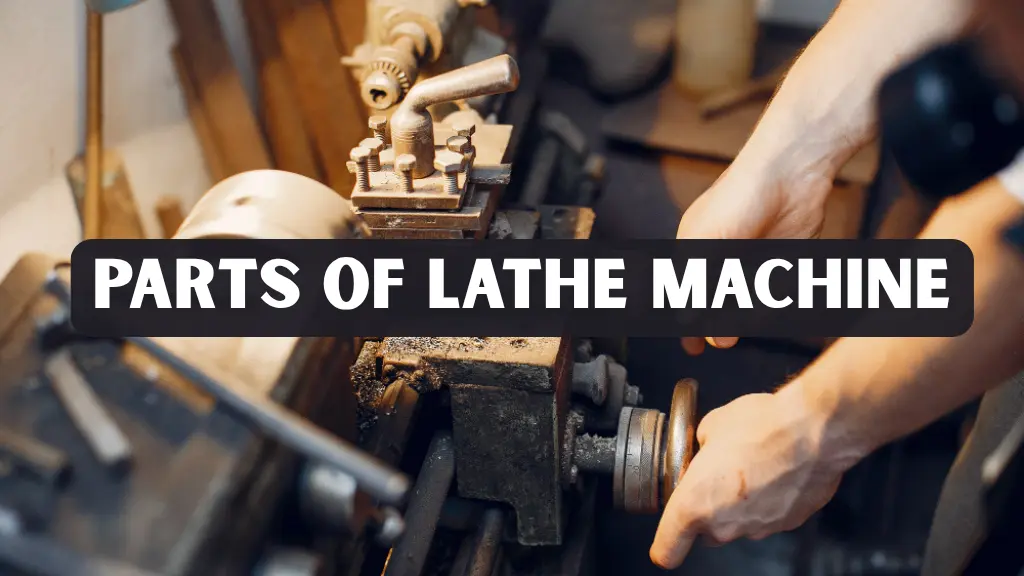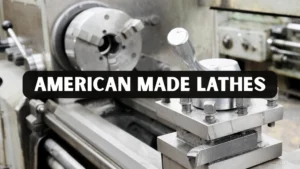Lathes are among the most widely used machines in manufacturing and workshop environments. Known for their versatility, they are essential for shaping, cutting, drilling, facing, and turning operations across a range of materials such as metal, wood, and plastics. Understanding the parts of lathe machine is vital for machinists, engineers, and hobbyists who want to achieve precision, efficiency, and safety in their work.
This guide explores the main components of a lathe, their functions, variations, and real-world applications. Whether you are a beginner or an experienced operator, this in-depth explanation provides the foundation for mastering lathe operations.
Why Knowing Lathe Parts Matters
A lathe’s effectiveness lies in its design. Every component, from the robust bed to the precise spindle, plays a role in ensuring accurate machining. By knowing each part, operators can maintain their equipment better, reduce downtime, and optimize performance. Manufacturers also benefit from skilled machinists who understand how to maximize the capabilities of each part. When machinists become familiar with the functionality of each part, they can diagnose issues quickly, select the correct cutting conditions, and operate with more confidence.
Main Parts of Lathe Machine
The parts of lathe machine are generally divided into two main groups: primary components and auxiliary components. Primary parts include essential elements such as the bed, headstock, tailstock, carriage, and spindle that make machining possible. Auxiliary parts include attachments like steady rests, mandrels, and taper turning devices that extend the machine’s capabilities. Together, these parts ensure the lathe can handle everything from basic turning to advanced precision tasks.
Bed
The bed is the backbone of the lathe machine. It is a large, rigid, and horizontal base that supports all other major components. Typically made of cast iron, the bed ensures stability and minimizes vibrations during operation. The hardened guideways on the bed provide precise movement for the carriage and tailstock. Without the bed’s structural rigidity, no other part could function with accuracy, making it the foundation of the entire lathe.
Headstock
Located at the left end of the bed, the headstock houses the spindle, gears, bearings, and motor. It is the power center of the lathe. By holding and rotating the workpiece at various speeds, the headstock facilitates multiple machining operations. Advanced headstocks often include variable-speed drives and electronic controls, which provide greater precision and efficiency. In modern CNC lathes, the headstock is designed to accommodate automated tool changes and high-speed operations, increasing productivity in industrial workshops.
Tailstock
Opposite the headstock, the tailstock supports the other end of the workpiece. It slides along the bed and can be clamped at any desired position. The tailstock quill holds tools such as drills, reamers, and centers, enabling drilling or supporting long workpieces. In industrial settings, machinists often adjust the tailstock to maintain alignment with the spindle for accuracy. This component is especially important in operations involving long shafts or cylindrical workpieces, where proper alignment ensures smooth machining.
Carriage
The carriage moves along the bed and holds the cutting tool. It consists of several subcomponents, including the saddle, apron, cross-slide, compound rest, and tool post. Each subcomponent plays a unique role in controlling the cutting tool’s motion. The carriage ensures precise movement, which is critical for turning, facing, and threading operations. By moving steadily along the workpiece, the carriage allows the cutting tool to shape the material with consistency.
Saddle
The saddle is mounted directly on the bed ways. It provides a platform for the cross-slide and tool post. The saddle’s robust design allows it to withstand significant cutting forces. Without it, the cutting tool could not be positioned accurately, and machining would lack the precision needed for quality production.
Cross-Slide
Positioned on the saddle, the cross-slide moves the cutting tool at right angles to the workpiece. This movement is vital for operations like facing or creating grooves. Operators adjust the cross-slide using a handwheel or automated controls in CNC machines. Its design enables smooth tool movement, and in modern machines, digital readouts provide exact measurements, further enhancing accuracy.
Compound Rest
The compound rest sits on the cross-slide and allows angular adjustment of the cutting tool. Machinists use it for taper turning, chamfering, and precision cuts. Its versatility makes it an essential part of both manual and CNC lathes. In tasks that require fine adjustments or custom angles, the compound rest gives machinists flexibility without needing complex setups.
Tool Post
The tool post secures the cutting tool in place. Depending on the lathe type, it can hold single or multiple tools. Modern quick-change tool posts save time by allowing operators to switch between tools efficiently. In production settings, tool posts are often configured with several cutting tools at once, allowing different operations to be performed in quick succession.
Apron
Attached to the saddle, the apron houses gears, levers, and mechanisms that control carriage movement. It also manages power feed and threading operations, ensuring consistency and precision. For machinists, the apron represents the control center of the carriage, and learning its operation is crucial to mastering the lathe.
Spindle
The spindle is the rotating axis housed within the headstock. It holds the workpiece either directly or through attachments like chucks and collets. Precision bearings ensure smooth rotation, which is crucial for accuracy. A poorly maintained spindle can lead to vibration, inaccurate cuts, or even damage to the workpiece, highlighting its importance in machining.
Chuck
The chuck is one of the most recognizable lathe accessories. It holds and secures the workpiece to the spindle. Common types include three-jaw chucks for round workpieces and four-jaw independent chucks for irregular shapes. Collet chucks and magnetic chucks are also used in specialized applications. The choice of chuck directly impacts the range of workpieces that can be machined.
Feed Mechanism
The feed mechanism controls the movement of the carriage and cross-slide, enabling smooth cutting operations. By regulating feed rates, operators can balance between speed and surface finish quality. A properly adjusted feed mechanism ensures consistent results and reduces tool wear.
Lead Screw and Feed Rod
The lead screw is a long threaded rod that drives the carriage during threading operations. Alongside it, the feed rod controls automatic feed for general turning. Together, they ensure precision in both manual and automated lathes. Without these parts, threading and power feeding would be difficult and imprecise.
Gearbox
The gearbox transmits power from the motor to the spindle and feed mechanism. It provides different speed ranges and feed rates, making the lathe versatile for various materials and cutting conditions. In modern machines, electronically controlled gearboxes offer smoother transitions between speeds, reducing wear on the system.
Legs or Stand
Supporting the bed, the legs or stand provide stability to the entire machine. In heavy-duty lathes, these stands are made from cast iron or steel to absorb vibrations effectively. A sturdy foundation is essential for precision, as even slight instability can result in errors in machining.
Auxiliary Parts and Attachments
Beyond the main components, auxiliary parts enhance a lathe’s functionality. These include steady rests, follow rests, mandrels, and taper attachments. While not always in use, these accessories extend the range of machining operations possible on a lathe. For example, steady rests are indispensable when machining long shafts, while mandrels ensure accurate internal machining of cylindrical parts. These attachments allow machinists to adapt the lathe to different challenges.
Types of Lathes and Their Parts
Different types of lathes; engine lathes, turret lathes, CNC lathes, and special-purpose lathes retain the same fundamental parts, though their designs vary. For instance, CNC lathes integrate advanced electronics for automated control, while wood lathes prioritize simplicity for shaping. Regardless of type, the essential structure remains consistent, proving that the parts of lathe machine form the backbone of every design.
Real-World Applications
In industries such as automotive, aerospace, and manufacturing, lathes are indispensable. Precision components like shafts, bushings, and pulleys are commonly produced using lathe machines. Small workshops and training institutes also rely on lathes for teaching machining fundamentals. The adaptability of lathe parts makes them suitable for projects ranging from mass production to one-off prototypes. The ability to transition from roughing cuts to fine finishing within the same setup demonstrates the efficiency and reliability of this machine.
Maintenance and Care of Lathe Parts
Proper maintenance of lathe parts is critical for long-term performance. This includes regular lubrication of bearings and gears, alignment checks for the headstock and tailstock, and cleaning of guideways. Skilled machinists often inspect parts for wear and replace components like belts, gears, or bearings to prevent downtime. Preventive maintenance not only extends machine life but also ensures safety. Regular cleaning and inspection build operator trust in the equipment and lead to consistent performance.
Modern Advancements in Lathe Components
Modern lathes are evolving with features like digital readouts, automated tool changers, and smart sensors. CNC technology integrates computer programming with traditional lathe parts, creating machines capable of high-speed, high-precision manufacturing. These advancements demonstrate how the foundational parts of lathe machine continue to remain relevant even in advanced production environments. Integration of Industry 4.0 technologies has further enhanced monitoring and predictive maintenance, ensuring lathes can handle complex requirements with minimal downtime.
Conclusion
The parts of lathe machine form the foundation of its efficiency, accuracy, and versatility. From the sturdy bed to the precision spindle, every component contributes to high-quality machining. By understanding and maintaining these parts, operators can ensure reliable performance across countless applications. With ongoing advancements in technology, these fundamental components continue to evolve, proving that while designs may change, the essentials remain timeless.
FAQs
What are the five main parts of a lathe?
The five main parts are the bed, headstock, tailstock, carriage, and spindle. Each plays a critical role in ensuring the machine operates smoothly and accurately.
Why is the bed important in a lathe?
The bed provides the foundation for all other components. Its rigidity ensures accuracy and minimizes vibration during cutting operations.
Can accessories be considered as lathe parts?
Yes, accessories like chucks, rests, and mandrels are considered auxiliary parts that enhance the machine’s versatility.
How do modern CNC lathes differ in parts?
While CNC lathes include the same essential parts, they integrate electronic controls, servomotors, and automated systems for enhanced performance.
How can operators maintain lathe parts?
Routine checks, lubrication, and proper alignment are the best ways to maintain lathe parts. Replacing worn components promptly helps avoid major breakdowns.




